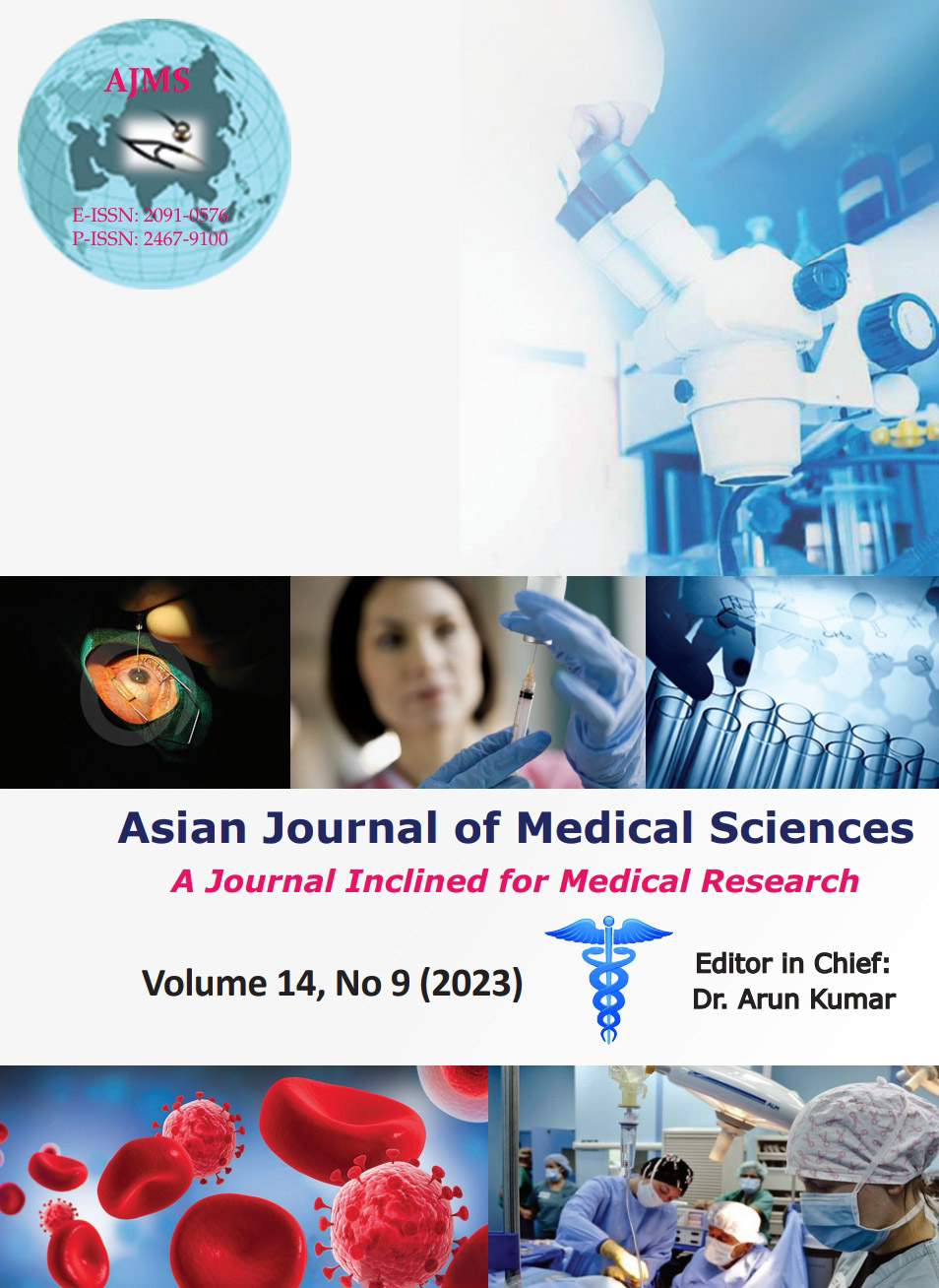Clinical profile and 30-day outcome of patients with acute coronary syndrome
Keywords:
Acute coronary syndrome; ST segment elevation myocardial infarction; Non-ST segment elevation myocardial infarction; Unstable angina; Major adverse cardiovascular events; Clinical outcomeAbstract
Background: Acute coronary syndrome (ACS) accounts for a quarter of all-cause mortality, with substantial loss of productivity and socio-economic implications. Analyses of the clinical presentation, age- and gender-specific differences, and mortality pattern are decisive in determining the clinical outcome of a patient.
Aims and Objectives: The primary objective was to determine the in-hospital and 30th day outcomes in patients with ACS. The secondary objectives were to study cardiometabolic risk factors, the clinical presentation, and the clinical course of the patients with ACS during hospitalization.
Materials and Methods: The present study was conducted for 1-year duration involving 110 patients diagnosed with ACS. The patients’ data pertaining to socio-demographic information, clinical features, details of hospitalization, and treatment modalities were collected. The outcomes based on mortality and major adverse cardiovascular events (MACE) were evaluated in two phases: (a) in-hospital and (b) at the 30th day from the date of hospitalization.
Results: Out of 110 patients hospitalized with a diagnosis of ACS, the majority were male (71.82%), and their mean age was 58.45±9.18 years. Hypertension, obesity, smoking, and family history of ACS were reported by 40%, 30%, 30%, and 27.27% of patients, respectively. Chest pain was the commonest symptom, followed by sweating and radiating pain. The mean duration of hospitalization was 6.345±2.46 days. ST-segment elevation myocardial infarction (STEMI) was the commonest type of ACS, with a predominance of anterior wall myocardial infarction (MI). The mean door-to-needle time was 43.53±7.75 min, and 29.1% of patients underwent thrombolysis. During hospitalization, improvement and MACE were observed in 73.64% and 26.36% of patients, respectively. 30-day outcome MACE was significantly higher among STEMI patients. Mortality was significantly higher in patients with <30% left ventricular ejection fraction (LVEF), both during hospitalization and after 30 days.
Conclusion: The present study revealed that the mean age of presentation was 58.45±9.18 years. Anterior wall MI was the commonest pattern of STEMI. Thus, the type of MACE and mortality were significantly higher among patients with either LVEF <30% or STEMI. Thus, type and severity of ACS, along with clinical presentation, existing risk factors, and access to medical care, play a determining role in the clinical outcome of a patient.
Downloads
Downloads
Published
How to Cite
Issue
Section
License
Copyright (c) 2023 Asian Journal of Medical Sciences

This work is licensed under a Creative Commons Attribution-NonCommercial 4.0 International License.
Authors who publish with this journal agree to the following terms:
- The journal holds copyright and publishes the work under a Creative Commons CC-BY-NC license that permits use, distribution and reprduction in any medium, provided the original work is properly cited and is not used for commercial purposes. The journal should be recognised as the original publisher of this work.
- Authors are able to enter into separate, additional contractual arrangements for the non-exclusive distribution of the journal's published version of the work (e.g., post it to an institutional repository or publish it in a book), with an acknowledgement of its initial publication in this journal.
- Authors are permitted and encouraged to post their work online (e.g., in institutional repositories or on their website) prior to and during the submission process, as it can lead to productive exchanges, as well as earlier and greater citation of published work (See The Effect of Open Access).




